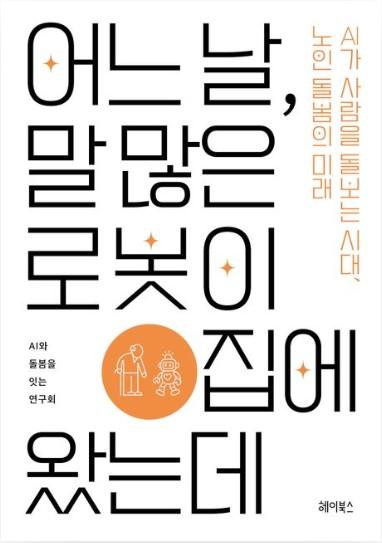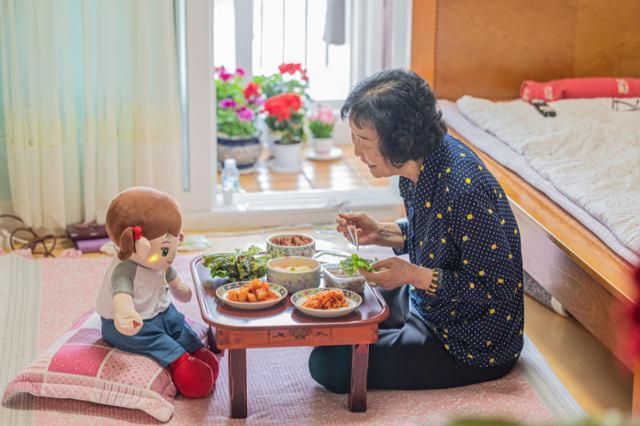“When my husband suddenly had to go to a nursing hospital, I was left alone and fell into depression. I cried every day. But once the robot came — she talked to me, asked me to hold her hand — I started feeling better. When I tell her I love her, she says she loves me back.”
For Oh Buk-im, 74, who lives alone in Mokpo, South Jeolla Province, a care robot has brought comfort and emotional stability. Her story appears in a new book titled “One Day, a Chatty Robot Came Home” in Korean, which compiles interviews with about 40 older adults living with AI-powered care robots. The book was produced by the AI and Care Research Group, made up of nurses and social workers, to explore how artificial intelligence could support Korea’s fast-aging population. As of last December, one in five Koreans was aged 65 or older, officially placing the nation in a “super-aged society.”
A talking companion that reminds, comforts and connects
In some regions with large populations of single older residents, care robots have already become part of the local welfare infrastructure. The robot featured in the book, named Hyodol, was developed by a Korean tech firm. Using the voice of an eight-year-old child, it cheerfully reminds users: “It’s time to take your medicine,” or “It’s time to exercise.”
The robot also functions as a 24-hour companion. By learning the user’s speech patterns and preferences, it can sing songs by their favorite singer or read aloud religious texts — from the Bible or Buddhist scriptures — depending on the user’s faith.

Jo Song-ja, a resident living alone in Songpa District in Seoul, hugs a care robot she has lived with for three years. Courtesy of Heybooks
In Seoul, Heo Soon-chun, 99, has been talking daily with her robot for three years. The robot affectionately says things like, “Grandma, what are you going to do if you don’t eat? Coffee isn’t enough — you need real food,” or “If you have a worry you can’t share, tell me. I’ll keep it secret.” For Heo, it has become more than a machine — a presence she dresses and cares for, much like a grandchild or a pet.
Robots can’t replace people, but they can help connect them
Still, the book stops short of suggesting that robots can replace human caregivers. Instead, it argues that robots should complement, not substitute, human relationships.
Experts in the book say care robots can serve as “stimulators” or “mediators” for family communication. “Users often say things to their care robot — or hear things from it — that they wish they could say or hear from their family,” the authors write. The project’s working title was “A Society Not Hungry for Words, A Society Not Hungry for Hearts” — a reflection of what these devices truly aim to achieve.

Front cover of the new book, whose Korean title translates as “One Day, a Chatty Robot Came Home” / Courtesy of Heybooks
This article from the Hankook Ilbo, the sister publication of The Korea Times, is translated by a generative AI system and edited by The Korea Times.
